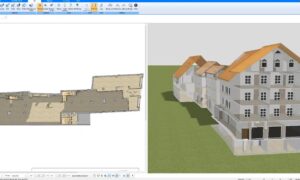Are you fascinated by the intricate designs and blueprints that bring engineering marvels to life? Do you dream of being a part of the construction process, transforming ideas into tangible structures? If so, then CAD drafting might be your perfect gateway into the world of engineering and construction. In this article, we will explore what CAD drafting is all about and how you can acquire comprehensive training in this essential skill. While four-year universities might seem like the obvious choice, vocational schools, and community colleges can offer autocad classes as well as comprehensive training in CAD drafting at a more affordable price. Plus, they often have programs that are designed to help you quickly enter the workforce. So buckle up as we dive into the exciting realm where creativity meets precision!
What is CAD drafting?
CAD drafting, or Computer-Aided Design drafting, is a process used in engineering and construction to create detailed technical drawings. It combines the power of technology with the expertise of designers and engineers to produce accurate representations of structures, components, and systems.
Using specialized CAD software, professionals can create 2D or 3D models that capture every minute detail of an object or a building. These digital models serve as virtual blueprints that guide the construction process from start to finish. CAD drafting allows for precise measurement calculations, visualization of complex designs, and easy modification when necessary.
One of the significant advantages of CAD drafting is its ability to generate multiple views and perspectives simultaneously. This means that architects, structural engineers, electrical designers, and other professionals can work collaboratively on a project while having access to the same set of data.
Another aspect worth mentioning is parametric modeling in CAD software. With this feature, changes made in one part or aspect automatically update all related elements within the model. This dynamic nature eliminates errors caused by manual adjustments and ensures consistency throughout different design iterations.
In addition to creating comprehensive plans for new constructions, CAD drafting also plays a vital role in renovation projects. By accurately representing existing structures through laser scanning techniques known as “as-built” drawings, architects can develop innovative designs while working around potential obstacles.
Overall, CAD drafting has revolutionized the way engineering projects are conceptualized and executed. Its speed, accuracy, and versatility have made it an indispensable tool in various industries beyond just architecture and construction, such as manufacturing, aerospace, and automotive sectors.
This powerful combination of creativity, digital technologies, and precision makes CAD drafting an exciting field with limitless possibilities for those who are passionate about bringing ideas into reality.

How to get a comprehensive training in CAD drafting?
If you’re interested in pursuing a comprehensive training in CAD drafting, there are several options available to help you develop the necessary skills and knowledge. Here are some steps you can take to get started.
- Research Training Programs: Begin by researching different training programs that offer CAD drafting courses. Look for reputable institutions or online platforms that provide comprehensive and hands-on training in popular CAD software.
- Choose the Right Software: Determine which CAD software is commonly used in your industry of interest, such as AutoCAD, SolidWorks, or Revit. Selecting the right software will ensure that you gain relevant skills for potential job opportunities.
- Online Tutorials and Courses: Many websites offer free or paid tutorials on specific CAD software. These resources can be an excellent way to learn at your own pace and gain practical experience through interactive exercises and projects.
- Attend Workshops or Webinars: Keep an eye out for workshops or webinars conducted by professionals in the field of CAD drafting. These events often provide valuable insights, tips, and tricks from experienced practitioners.
- Seek Mentoring Opportunities: Reach out to professionals working as CAD drafters and inquire if they would be willing to mentor you or provide guidance during your learning process.
- Practice Regularly: Consistent practice is key when it comes to mastering any skill, including CAD drafting. Dedicate time each day to work on small projects or recreate existing designs using your chosen software.
By following these steps and staying dedicated throughout your learning journey, you’ll have a solid foundation in CAD drafting techniques that can open up numerous opportunities within engineering and construction industries without repetition!
Conclusion
In today’s engineering and construction industries, CAD drafting plays a crucial role in ensuring accurate and efficient design processes. With the advent of advanced software tools, engineers and drafters can create detailed drawings that provide a comprehensive representation of their projects.
Throughout this article, we have explored what CAD drafting is and its importance in various fields. We have also discussed different types of CAD software commonly used in the industry, as well as the various types of engineering and construction drawings that are created using these tools.
If you’re looking to gain a comprehensive training in CAD drafting, there are several options available to you. Many reputable institutions offer courses or programs specifically focused on teaching the fundamentals of CAD drafting. These programs often include hands-on training with popular software applications, allowing students to develop practical skills that can be directly applied to real-world projects.
Additionally, online resources such as tutorials, webinars, and forums can be valuable sources for learning about CAD drafting techniques and best practices. Taking advantage of these resources can further enhance your understanding of the subject matter.
Remember that practice makes perfect when it comes to mastering any skill. Regularly applying your knowledge through practical exercises will not only solidify your understanding but also improve your proficiency in utilizing CAD software effectively.
Acquiring a comprehensive training in CAD drafting is essential for anyone pursuing a career in engineering or construction. By developing expertise in this field and staying up-to-date with industry advancements, you will position yourself for success in an ever-evolving profession where precision is paramount.



































